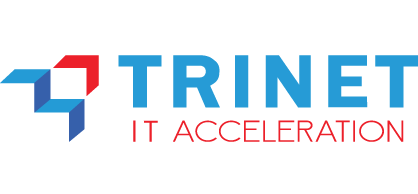Tech Innovation > Digital & IoT > CCTV for Buildings & Areas

Without this solution, organizations face the following challenges:

- 24/7 Real-Time Monitoring – Continuous surveillance to detect and prevent unauthorized access.
- Remote Access – View live footage from anywhere via mobile apps or web platforms.
- High-Resolution Cameras – HD and 4K cameras for clear images, even at long distances.
- AI-Powered Video Analytics – Identifies threats, reducing false alarms.
- Intrusion Detection – Detects movement beyond a designated perimeter.
- Facial Recognition – Identifies individuals for access control and security tracking.
- License Plate Recognition (LPR) – Automatically records vehicle details.
- Infrared (IR) & Thermal Cameras – Ensures visibility in complete darkness.
- Low-Light Sensors – Captures clear images even in dim conditions.
- Access Control Systems – Works with biometric scanners, RFID, and keycard systems.
- Alarm Systems – Triggers alarms when unauthorized access is detected.
- Perimeter Fencing Sensors – Enhances physical security by detecting tampering.
- IP67 & IP68-Rated Cameras – Waterproof and dustproof for harsh conditions.
- Vandal-Resistant Housing – Protects cameras from damage or sabotage.
- Instant Notifications – Sends alerts via SMS, email, or app when a threat is detected.
- AI-Powered Threat Classification – Differentiates between humans, animals, and vehicles.
- Automated Deterrents – Activates lights, sirens, or voice warnings to deter intruders.
- Cloud-Based Storage – Remote access to recorded footage with secure backups.
- NVR/DVR Storage – On-site recording with redundancy to prevent data loss.
- Edge Storage – Cameras with built-in SD cards for decentralized recording.
- Expandable Network – Supports multiple cameras across large perimeters.
- Customizable Zones – Defines specific areas for monitoring and alerts.

- Deters Theft & Vandalism – Visible cameras discourage criminals from attempting theft or property damage.
- Reduces Unauthorized Access – Prevents trespassing and intrusion into restricted areas.
- Minimizes Internal Theft & Fraud – Employees are less likely to commit misconduct when monitored.
- Protects Employees & Customers – Ensures a safer environment, reducing risks of attacks or accidents.
- Enhances Emergency Response – Real-time monitoring allows quick responses to security incidents.
- Monitors High-Risk Areas – Keeps an eye on hazardous zones to prevent workplace injuries.
- Improves Workflow Monitoring – Helps businesses track employee activity and adherence to protocols.
- Reduces Unnecessary Downtime – Identifies operational bottlenecks or unauthorized delays.
- Enhances Logistics & Asset Tracking – Keeps an eye on vehicle movement and inventory security.
- Reduces Security Costs – Lowers the need for additional security personnel.
- Lowers Insurance Premiums – Many insurance companies offer discounts for businesses with CCTV security.
- Prevents Financial Losses – Stops theft, fraud, and property damage before they escalate.
- Provides Evidence for Investigations – Recorded footage helps in resolving disputes or legal claims.
- Ensures Regulatory Compliance – Many industries require video surveillance for safety and security.
- Reduces Liability Risks – Protects businesses from false claims or legal actions.
- Improves Customer Trust – Clients feel safer in well-monitored environments.
- Manages Crowds & Traffic – Helps regulate entry points and parking areas.
- Prevents Workplace Harassment – Protects employees and visitors by discouraging inappropriate behavior.
- Remote Monitoring – Business owners can check live footage from anywhere.
- Expandable Security System – CCTV networks can be scaled as the business grows.
- Integration with Other Systems – Can be connected to alarms, access control, and AI analytics for better security.

- Protects machinery, raw materials, and warehouses from theft and vandalism
- Monitors hazardous zones to improve worker safety
- Tracks employee activity to ensure compliance with safety protocols
Example: A steel manufacturing plant uses perimeter CCTV with motion detection to prevent trespassing and unauthorized access.
- Secures loading docks and cargo storage areas from theft
- Monitors vehicle movement and access control at entry points
- Enhances supply chain security by preventing fraud and inventory loss
Example: A distribution center installs AI-powered CCTV to track truck arrivals and departures, reducing delays.
- Prevents break-ins, shoplifting, and vandalism
- Monitors parking lots and entrances for customer safety
- Reduces liability by recording incidents like accidents or disputes
Example: A shopping mall integrates CCTV with facial recognition to detect known shoplifters.
- Controls access to restricted areas like server rooms and executive offices
- Ensures employee and visitor safety in parking lots and entry points
- Prevents unauthorized access during non-working hours
Example: A tech company installs perimeter CCTV with remote monitoring to protect against data center breaches.
- Secures guest entry points, pools, and parking areas
- Monitors staff-only areas to prevent unauthorized access
- Enhances emergency response in case of security threats
Example: A luxury resort uses CCTV with infrared cameras for 24/7 surveillance of its perimeters.
- Protects ATM areas and vault rooms from unauthorized access
- Monitors high-risk zones like teller stations and back offices
- Enhances security with remote monitoring and automated alerts
Example: A bank installs perimeter cameras with AI analytics to detect suspicious activity outside ATM booths.
- Prevents unauthorized entry into restricted areas (ICUs, labs, pharmacies)
- Ensures patient and staff safety in emergency rooms and parking areas
- Monitors visitors and vendors for security compliance
Example: A hospital integrates CCTV with facial recognition to prevent unauthorized access to medicine storage.
- Prevents unauthorized access to school premises
- Ensures student and faculty safety on campus
- Monitors entry and exit points to prevent external threats
Example: A university installs CCTV with facial recognition to control entry to dormitories.
- Enhances security at main entry points and parking areas
- Monitors common areas like parks, gyms, and pools
- Prevents break-ins, vehicle theft, and property damage
Example: A gated community integrates CCTV with automatic license plate recognition to track visitor entry.
- Prevents equipment theft and trespassing
- Monitors worker activity for safety compliance
- Tracks delivery of materials and contractor movements
Example: A construction site installs solar-powered CCTV towers to secure its perimeter and reduce security guard costs.

-
CCTV cameras are strategically installed at key locations in and around the building, including entrances, parking lots, and common areas. They are placed to ensure maximum coverage and visibility.
-
The CCTV cameras capture real-time video footage of activities happening in their field of view. These cameras use high-definition sensors to ensure clear and detailed video quality.
-
The captured video is transmitted to a central monitoring station via cables, wireless networks, or fiber optics. The transmission is encrypted for security and privacy.
-
The video footage is stored on a digital video recorder (DVR) or network video recorder (NVR), depending on the system setup. This ensures that the footage can be reviewed later if needed.
-
Security personnel or remote operators monitor the live footage in real-time from a central monitoring station or through connected devices, such as smartphones and computers.
-
Many CCTV systems include motion detection capabilities. When suspicious activity is detected, the system can send instant alerts to security personnel via email, SMS, or an app.
-
Recorded footage can be easily accessed and reviewed through the DVR or NVR interface. It allows for detailed analysis of incidents or to gather evidence for investigations.












